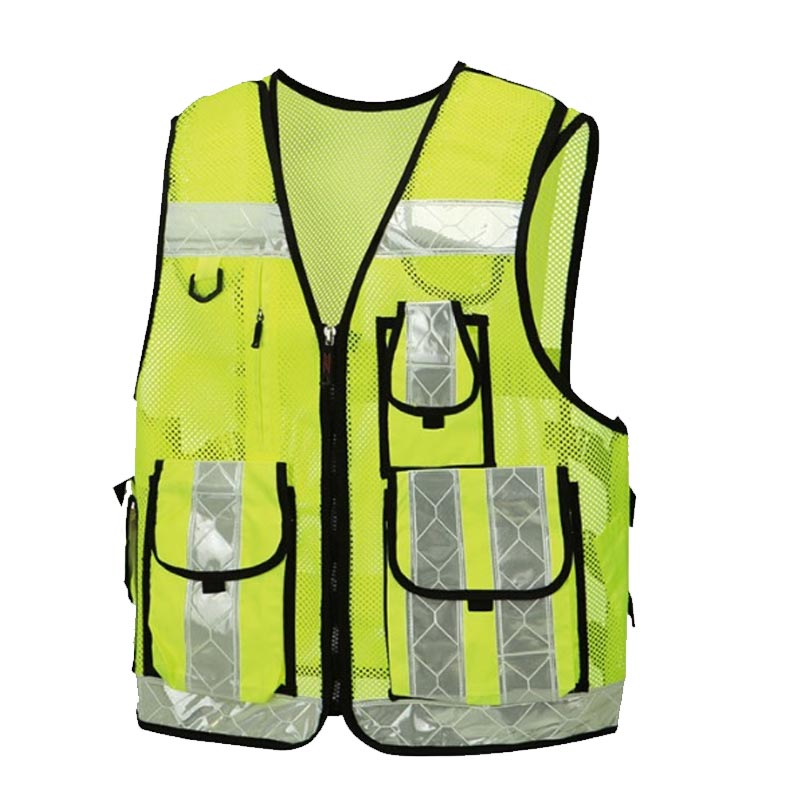The use of hi vis vest, also known as a reflective or safety vest, can help to prevent accidents and save lives on the road and in the workplace. It is designed to make the wearer more visible to other road users, such as drivers, pedestrians, and cyclists. It is typically worn by individuals who work on or near the road, such as emergency responders, construction workers, and utility workers, especially in low light conditions or at night, hi vis vest can help to reduce the risk of accidents and injuries.

How does hi vis vest work?
Hi vis vest, also known as high visibility safety apparel (HVSA), have become an essential piece of personal protective equipment for a wide range of occupations. Hi vis vest work by providing visual contrast, allowing wearers to be seen more easily in any environment, regardless of weather conditions or the time of day or night. The technology behind hi vis vest has been developed over the last few decades and is now widely used in a variety of industries from construction and roadworks to healthcare services.
Hi vis vest consist of fluorescent fabric with retro-reflective strips that reflect light back toward its source when exposed to direct illumination such as vehicle headlights or flashlights. This combination makes it easier for workers to be spotted from up to 150 meters away and keeps them safe while they are carrying out their duties.

Who should wear hi vis vest?
Hi vis vest is designed to make the wearer more visible to other road users, especially in low-light conditions or at night. They are typically worn by individuals who need to be seen by other road users while working on or near the road, such as:
- Emergency responders (e.g. police, fire, ambulance)
- Construction workers(Our safety hi vis vest)
- Utility workers
- Traffic control personnel(Our tactical hi vis vest)
- Airport ground crew
- Cyclists and pedestrians(Our sport hi vis vest)
In some countries, it is required by law for certain individuals to wear hi vis vest while working on or near the road. In other cases, the use of hi vis vest may be recommended as a best practice to help reduce the risk of accidents and injuries.
It is important to follow the rules and guidelines for wearing hi vis vest in your area to ensure your own safety, as well as the safety of others.



Quality hi vis vest standards
There are several quality standards that apply to hi vis vest. These standards are designed to ensure that vests are effective at making the wearer visible to other road users, especially in low light conditions or at night. Some of the key standards for hi vis vest include:
- ANSI/ISEA 107: This is a standard developed by the International Safety Equipment Association (ISEA) in the United States. It specifies the minimum performance and design requirements for high visibility apparel, including vests, jackets, and other garments.
- EN ISO 20471: This is a European standard that specifies the requirements for high visibility clothing, including vests, jackets, and other garments. It includes requirements for visibility, retroreflection, and durability.
- AS/NZS 4602: This is a standard developed by Standards Australia and Standards New Zealand. It specifies the requirements for high visibility clothing, including vests, jackets, and other garments, for use in the workplace.
To meet these standards, hi vis vest should be made of materials that are highly reflective and visible in a range of lighting conditions. They should also be designed to be comfortable and functional, with features such as adjustable sizing, durable closures, and pockets for storage. It is important to choose a hi vis vest that meets the appropriate standards for your needs and the work environment.




In conclusion, hi vis vest is an important tool for improving safety on the road and in the workplace. By making the wearer more visible to other road users, especially in low light conditions or at night, high visibility vests can help to prevent accidents and save lives. It is important to choose vests that meet quality standards and are appropriate for the needs of the wearer and the work environment. By wearing hi vis vest and encouraging others to do the same, we can all play a role in improving safety and reducing the risk of accidents.




